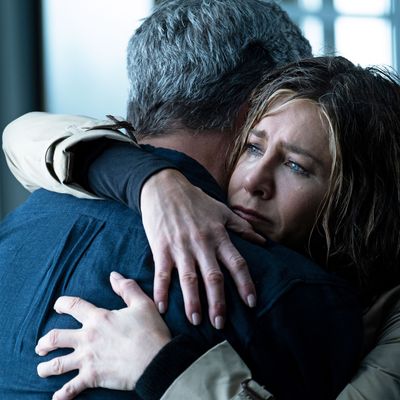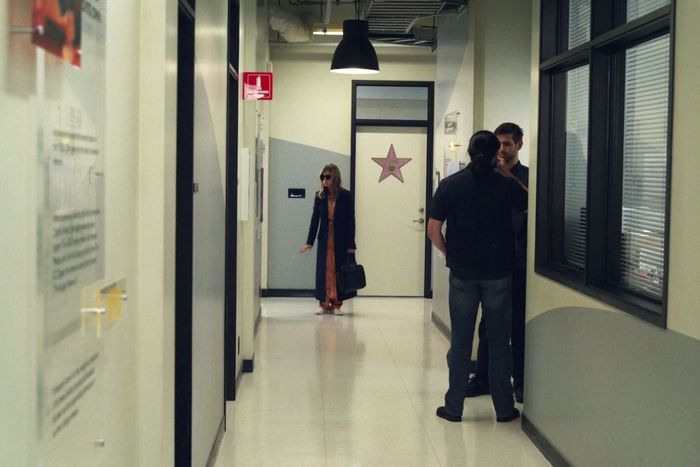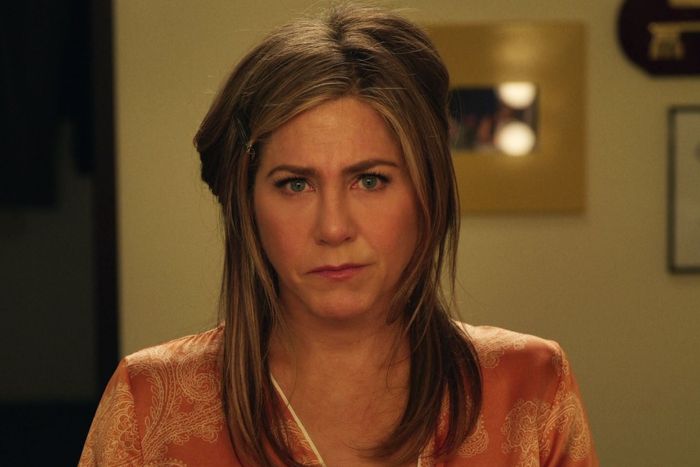
Mimi Leder has a remarkable career. Although she’s directed feature films like On the Basis of Sex and Deep Impact, she’s best known for her work as a TV director who excels at building and defining a show’s visual language. When she worked on the first season of ER, pioneering the walk-and-talk years ahead of The West Wing, the flowing shots gave the hospital set a sense of energy and motion. On The Leftovers, Leder completely revamped the series in its second season, insisting on more color to leaven the show’s heavy themes and using wide shots to create a sense of scope. She is masterful at knowing how a camera needs to move to create the emotion a scene requires.
But even so, Leder knows some critics think her latest project, The Morning Show, moves too slow. “Some people may get bored by it, but I never get bored by it!” she said. As an executive producer and director of five episodes of Apple TV+’s headliner drama, Leder decided early on that she wanted to use a lot of long shots that rested on characters’ reactions. “I wanted to hold on characters, maybe a little longer than normal,” she told Vulture. “Really explore those private moments.”
Take, for instance, a sequence in the pilot where Alex (Jennifer Aniston), a longtime Morning Show anchor, stares at herself in the mirror. Around her, a small army prepares her to go on camera and announce that her longtime co-anchor, Mitch (Steve Carell) has been accused of sexual misconduct. The shot holds on Alex’s face for several long seconds, zeroing in on her expression as she tries to pull herself together. She is furious and terrified and exhausted. For just a moment, her forehead twitches as though she’s about to start weeping, and then she shakes herself out of it. “There were a couple of people who said, ‘That’s really too long. You should really cut that down.’ But I didn’t!” Leder said, laughing. “I liked it long!”
Those long shots, that lingering attention to a private reaction, are key to the visual world Leder created for The Morning Show. “I was very interested in getting into the persona versus the real you. An anchor is required to be a certain way, that on-screen persona. And then, what is the real you?” she said. “How do you yourself lose touch with who you really are and who you used to be?”
Exploring private versus public personae is one of the things The Morning Show does best, especially through Aniston’s Alex. That idea is woven through all the rest of the show, too: The talk show’s set is what Leder describes as a “fake world” — she and the other producers wanted it to look a bit dated, with bright, flat light highlighting its surreally saturated blues and sunny yellows — but backstage, things look very different. “We went to The Today Show and GMA,” Leder said, “The halls are drab and boring, and there’s all these wires coming out of the ceiling.”
That dueling set design then filtered into how Leder conceived of the camera movement. While on live TV, the characters sit in beautifully lit, static, straight-on shots. But off-screen and behind the scenes, Leder’s direction is full of handheld camera work, much more than what the show’s director of photography Michael Grady initially suggested. “I wanted to do more handheld than he did,” Leder said. “I used the handheld camera when the emotions were more complicated and more messy.” It was an important way to visually differentiate between how things look on the talk show, where everything is bright and shiny, and how things look backstage. “I wanted a lot of messiness, people moving in and out of shadows, nothing to be too perfect,” she explained. It’s the same impulse driving that focus on long, extended character reactions: The interesting story, for Leder, is the interplay between complicated internal conflict and the false calm of smooth, polished exteriors.


But, Leder admits, The Morning Show was a challenging pilot to make. The trouble wasn’t because it was being made for Apple’s new streaming service (they were “really great partners,” she insisted), nor was it just because all TV pilots are challenging (although they are “exhausting”). The prime difficulty of The Morning Show was taking the subject material — incorporating a Me Too storyline that developed out of watching what happened with Harvey Weinstein, Matt Lauer, and others — and still maintaining the show’s tonal balance between gravity and lightness. “It was a really hard tone to hit between the comedy and the drama,” Leder said. “We were constantly walking that line.”
The key task of the pilot is to somehow juggle between the intense fallout of vague allegations against Steve Carell’s character, and what Leder insisted should be a “super-funny” look at how strange it is to be an anchor on a morning show. For the humorous side, Leder asked showrunner Kerry Ehrin to bulk up the opening montage, which illustrates the morning routine Alex performs in the middle of each night. (Aniston even weighed in with details of her own morning routine: “She came up with the jade roller on her face,” Leder said.) The sequence is also meant to suggest all the unseen people in Alex’s life: As she gets up and starts making the coffee, Leder explained, “I wanted it to look like someone had laid the stuff out there. No one’s making it for you, but there’s a staff hidden somewhere.”
After hitting those funny notes, The Morning Show’s pilot had to pivot enough to clarify that it’s taking its Me Too premise seriously. Leder insisted that the Mitch Kessler story is not a direct Matt Lauer analogy; it’s meant to be an “amalgamation of so many stories we’ve read about and heard about.” (Despite this, the Lauer parallels feel pointed: At one point in the series, a character discovers a button inside Mitch’s dressing room that closes and locks his door, which is something Lauer reportedly had as well.) When pressed on why it was important for Mitch to be an ongoing part of the series, Leder mentioned that his presence forces the show to stay engaged with the fallout of his actions. “I liked that we had a Mitch Kessler in our story line and these women have to navigate through all of it,” she said. “We get to see it. Feel it.”
Although The Morning Show often relies on handheld cameras to depict the flawed messiness of a character like Mitch, it also borrows from one of the shows that launched Leder’s career. In moments when Leder wanted The Morning Show to look like a workplace drama and when she needed the energy to “keep flying,” she turned to Steadicam shots. It’s “kind of an ode to ER,” Leder said. Like the handheld cameras and the long reaction shots, that Steadicam shot is built into The Morning Show’s visual vocabulary, one of the keys Leder established to tell this story the way she envisioned it. But none of it — the handhelds, the Steadicam, the colors, the tone — was ever set in stone. When making The Morning Show, Leder said, “I decided we weren’t going to have any rules. We were just going to go with what felt right.”



